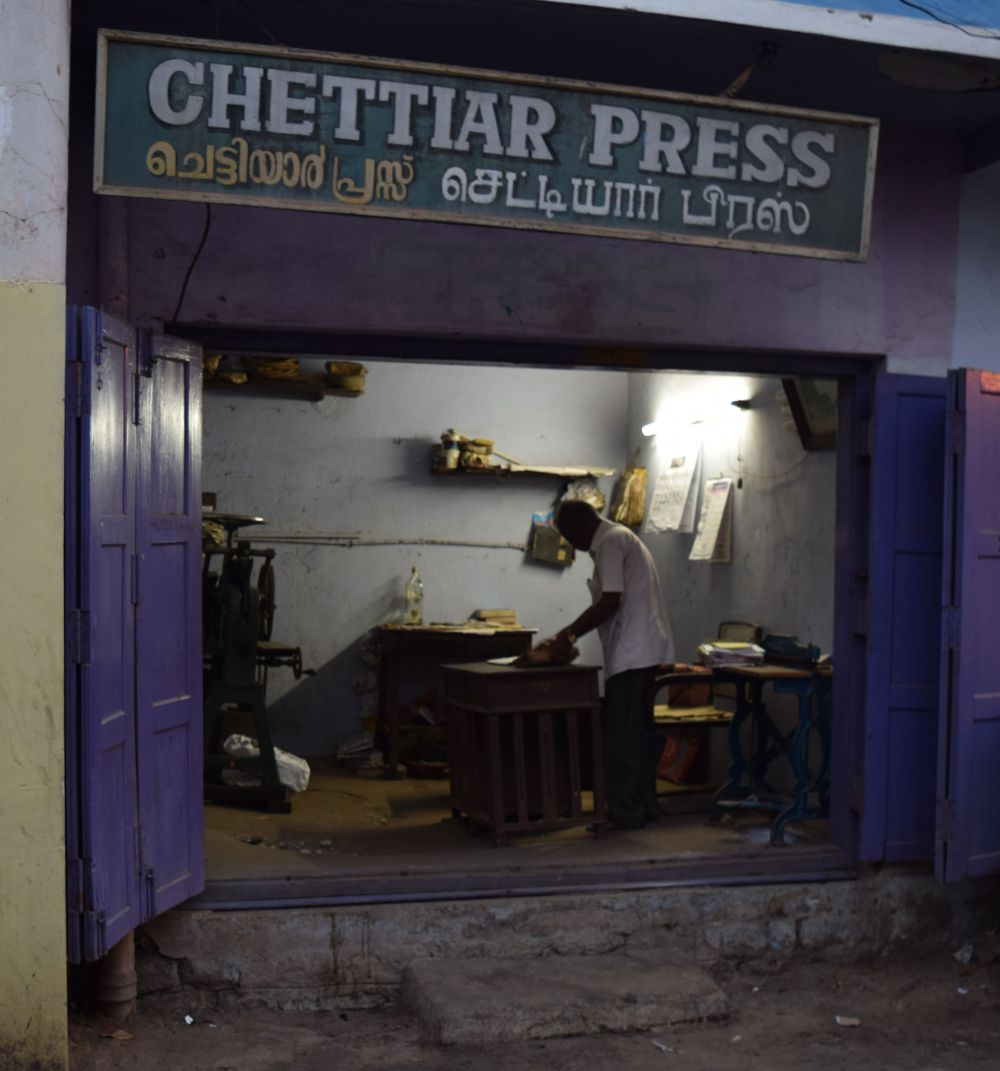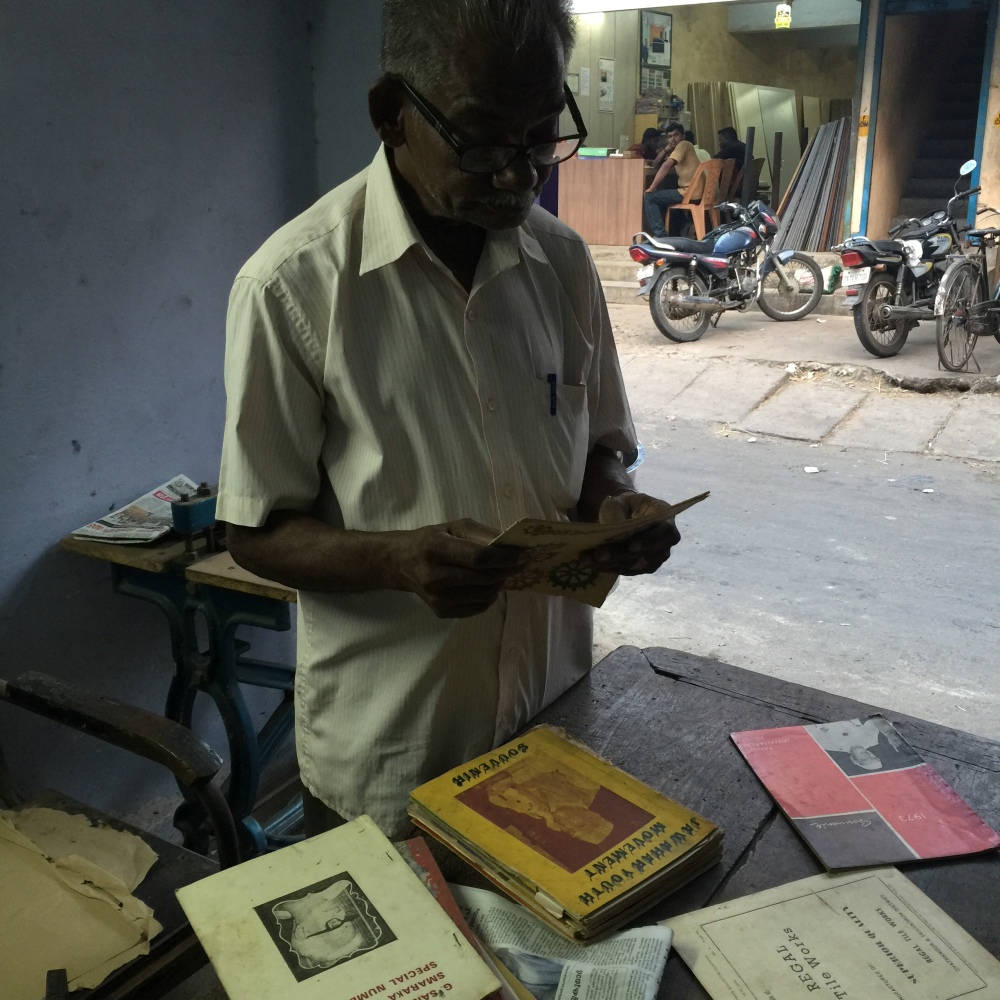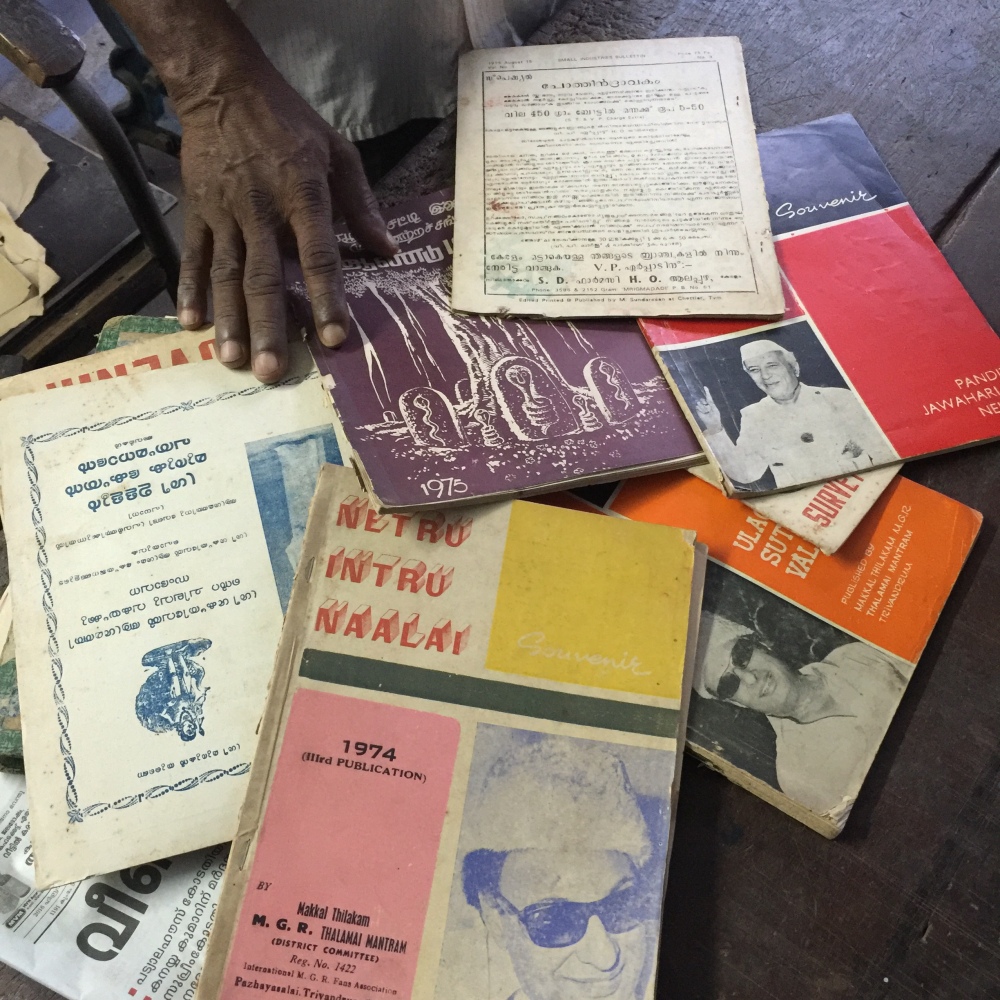
Hidden in the dingy bylanes of Chalai Market of Thiruvananthapuram is Chettiar Press, a manifestation of the wistful nostalgia for a bygone era coloured with feelings of extreme nationalism.
The Press was set up by Subbian Chettiar, an ardent patriot and Anchal Postman, in 1925 to print pamphlets relating to the freedom struggle and ignite the passion of the people.
Ninety years on, the Press is nestled in the same one-room accommodation, where it first began operation. But, the buzz and excitement of the early days are long dead. There are no more historical documents geared at inciting the people to act up being published.
All that is left of the erstwhile glory is the forlorn figure of the present owner and grandson of Subbian, Murugan Chettiar, who often flips through the outworn, sepia-toned documents and mourns the death of print technology as he knew it.
The Press had begun functioning as a letterpress wherein typefaces of various fonts and sizes were dipped in ink and pressed on to the paper, using a machine acquired from Amritsar.
“The letterpress style of printing was considered a work of art as it was entirely hand composed,” reminisces Murugan. “The meticulous arrangement of alphabets was time-consuming. The printing of a 200-page-book, for example, could take up almost a month.”

Even though the Press began with the printing of material laced with patriotism, it branched out to printing bill-books, novels and movie scripts. However, the over-riding element of nationalism remained unchanged even when Subbian’s son Shanmughom took over the reins of the Press in 1945.
An obvious manifestation of the patriotism of the Chettiar clan could very well be the decision of Shanmughom to rename the Press as Gandhi Memorial Press in 1949. The registration of the Press was, at that time, approved by the Governor of Travancore-Cochin.
The decision, however, had to be reversed because the popularity of the Press was at stake. “We were and are still known by the name of Chettiar Press. Eventhough the name was officially changed to Gandhi Memorial Press, when I took over in 1960, I opted the former name.”
But, even as printing technology moved leaps and bounds over the years, Chettiar Press remained untouched by innovation and inventions until Desktop Publishing (DTP) printing came along.
The old printing machine generated copies until letterpress had to be finally closed down in 2005 owing to lack of customers and emergence of faster, superior technology.
The last nail in the coffin was the shutting down of foundries in 2000. Earlier on, the typefaces of the customers’ choice were imported from Swadesi Type Foundry, Madras at a cost of Rs 20. “The over-riding nationalist streak,” commented Murugan, “was also evident in the manner in which most foundries were named.”

Murugan managed to continue printing for a few years after the foundries closed down, but, had to eventually stop because of the absence of typefaces to replace the worn-out ones.
Murugan, being a “digital immigrant”, someone not born to technology, had to eventually succumb to the onslaught of modernisation. He presently utilises the brand name of Chettiar Press to outsource printing work to a nearby digital printing outlet.
What remains of the old Amritsar-made printing machine is only the paper-cutting unit. It is, however, still kept in a corner of the office as a remembrance of the glorious time charged with activism and nationalism and is occasionally used.
The death of Chettiar Press is not just the slow effacement of a glorious past but the cessation of a business that helped in survival of three generations of the Chettiar family. Murugan confesses to go through the old pamphlets, scripts of MGR movies and writings of Communist leader A K Gopalan, the vestiges from the heydays of Chettiar Press, in moments of solitude.
The content is great . In Kerala there are many vaayanashalas ” Reading House ” where many such old books are kept .
LikeLiked by 1 person
Have been to libraries with books dating back to early twentieth century. A very rare sight these days though. Thank you. 🙂
LikeLike
Great article,What a beautiful start to what would most definitely be a even beautiful journalistic journey.
LikeLiked by 1 person
That’s the dream. Thanks a lot. 🙂
LikeLike
keep going buddy. nice article. all the best
LikeLiked by 1 person
Thanks buddy. 🙂
LikeLike
Beautiful! Looking forward to more such human interest stories from you 🙂
LikeLiked by 1 person
Hopefully, yes! Thanks. 🙂
LikeLike
Good write composition. Pictures are added aptly. Keep up the good work! 🙂
LikeLiked by 1 person
Thank you, chettai. 🙂
LikeLike
Awesome inspiration sister. Great experience
LikeLiked by 1 person
Thank you!
LikeLike
Mourning was precisely the emotion reading this piece evoked. Beautifully written.
LikeLiked by 1 person
As we walk into a new normal, these memories seem even more distant. Thank you for stopping by.😊
LikeLiked by 1 person